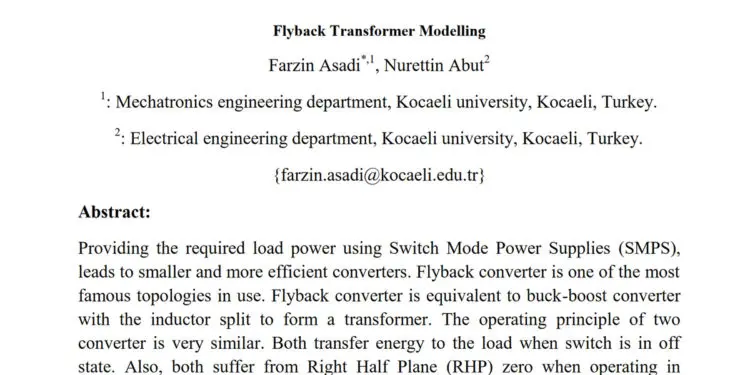Abstract:
Providing the required load power using Switch Mode Power Supplies (SMPS), leads to smaller and more efficient converters. Flyback converter is one of the most famous topologies in use. Flyback converter is equivalent to buck-boost converter with the inductor split to form a transformer.
Title: Flyback Transformer Modelling
Author(s): Farzin Asadi*1, Nurettin Abut*2
1: Mechatronics engineering department, Kocaeli university, Kocaeli, Turkey.
2: Electrical engineering department, Kocaeli university, Kocaeli, Turkey.
Organisation(s): Kocaeli university, Kocaeli, Turkey
Symposium: EPCI e-Symposium original paper
Reference: email contact: [email protected]
ISBN: N/A
e-Sessions Applications:
e-Sessions Scope Components: Inductors & Transformers
e-Sessions Topics: Simulation & Modelling, Circuit Design
read the full paper in pdf here.
































